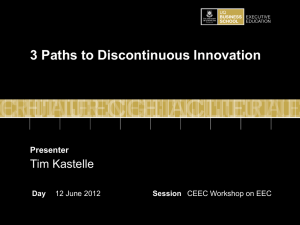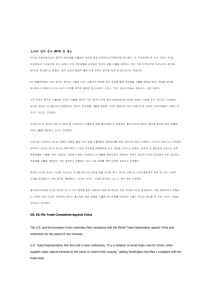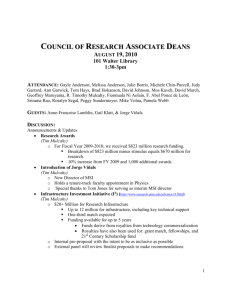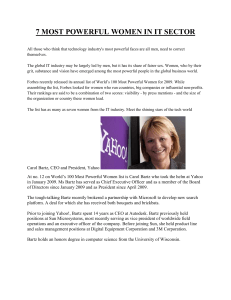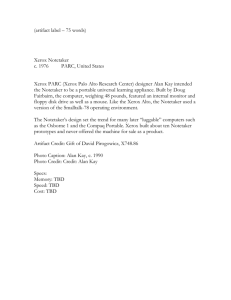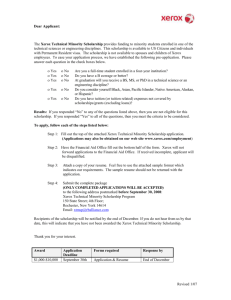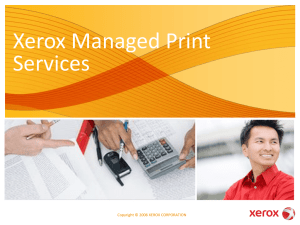Video Case Chapter 7: Anne Mulcaly: How to Make Decisions
advertisement
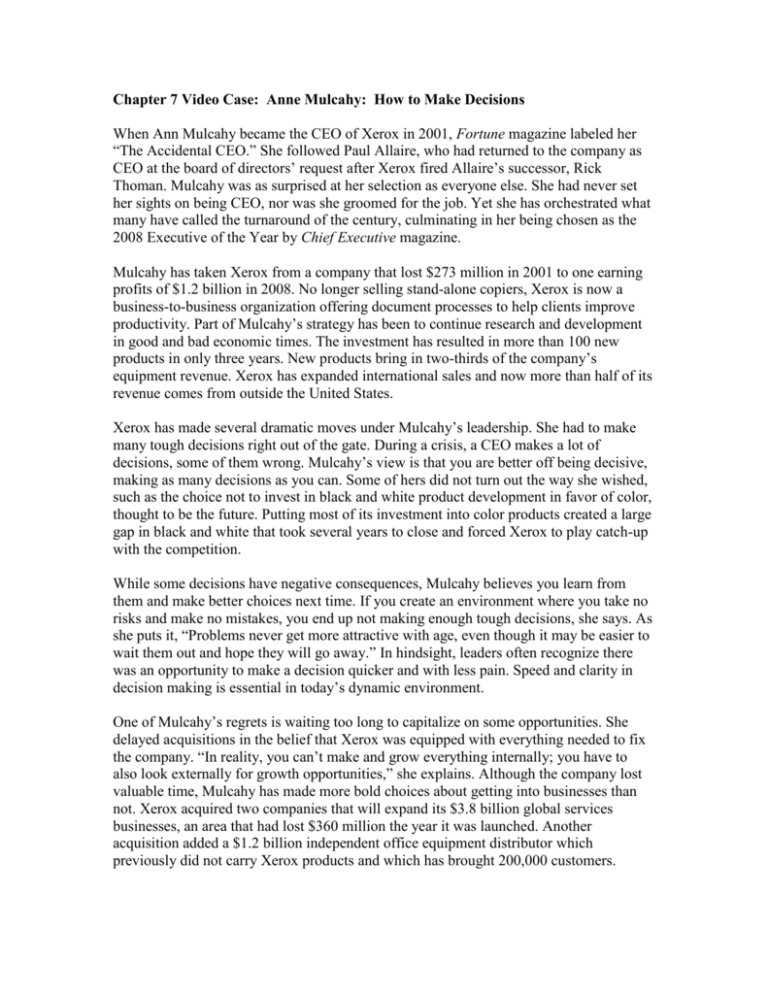
Chapter 7 Video Case: Anne Mulcahy: How to Make Decisions When Ann Mulcahy became the CEO of Xerox in 2001, Fortune magazine labeled her “The Accidental CEO.” She followed Paul Allaire, who had returned to the company as CEO at the board of directors’ request after Xerox fired Allaire’s successor, Rick Thoman. Mulcahy was as surprised at her selection as everyone else. She had never set her sights on being CEO, nor was she groomed for the job. Yet she has orchestrated what many have called the turnaround of the century, culminating in her being chosen as the 2008 Executive of the Year by Chief Executive magazine. Mulcahy has taken Xerox from a company that lost $273 million in 2001 to one earning profits of $1.2 billion in 2008. No longer selling stand-alone copiers, Xerox is now a business-to-business organization offering document processes to help clients improve productivity. Part of Mulcahy’s strategy has been to continue research and development in good and bad economic times. The investment has resulted in more than 100 new products in only three years. New products bring in two-thirds of the company’s equipment revenue. Xerox has expanded international sales and now more than half of its revenue comes from outside the United States. Xerox has made several dramatic moves under Mulcahy’s leadership. She had to make many tough decisions right out of the gate. During a crisis, a CEO makes a lot of decisions, some of them wrong. Mulcahy’s view is that you are better off being decisive, making as many decisions as you can. Some of hers did not turn out the way she wished, such as the choice not to invest in black and white product development in favor of color, thought to be the future. Putting most of its investment into color products created a large gap in black and white that took several years to close and forced Xerox to play catch-up with the competition. While some decisions have negative consequences, Mulcahy believes you learn from them and make better choices next time. If you create an environment where you take no risks and make no mistakes, you end up not making enough tough decisions, she says. As she puts it, “Problems never get more attractive with age, even though it may be easier to wait them out and hope they will go away.” In hindsight, leaders often recognize there was an opportunity to make a decision quicker and with less pain. Speed and clarity in decision making is essential in today’s dynamic environment. One of Mulcahy’s regrets is waiting too long to capitalize on some opportunities. She delayed acquisitions in the belief that Xerox was equipped with everything needed to fix the company. “In reality, you can’t make and grow everything internally; you have to also look externally for growth opportunities,” she explains. Although the company lost valuable time, Mulcahy has made more bold choices about getting into businesses than not. Xerox acquired two companies that will expand its $3.8 billion global services businesses, an area that had lost $360 million the year it was launched. Another acquisition added a $1.2 billion independent office equipment distributor which previously did not carry Xerox products and which has brought 200,000 customers. Questions 1. Why is it so critical to make decisions sooner rather than later? 2. What biases should a manager like Anne Mulcahy avoid in making decisions? 3. How can managers make sure the tough decisions they make are ethical? Sources: J. P. Donlon, “The X-factor,” Chief Executive, June 2008, pp. 26-31; “NAFE Names Xerox in Top Companies for Executive Women List,” FinancialWire, March 18, 2008; Evelyne Sevin, “Why You Don’t Want a Woman to be More Like a Man,” Financial Times, March 14, 2008, p. 12.

